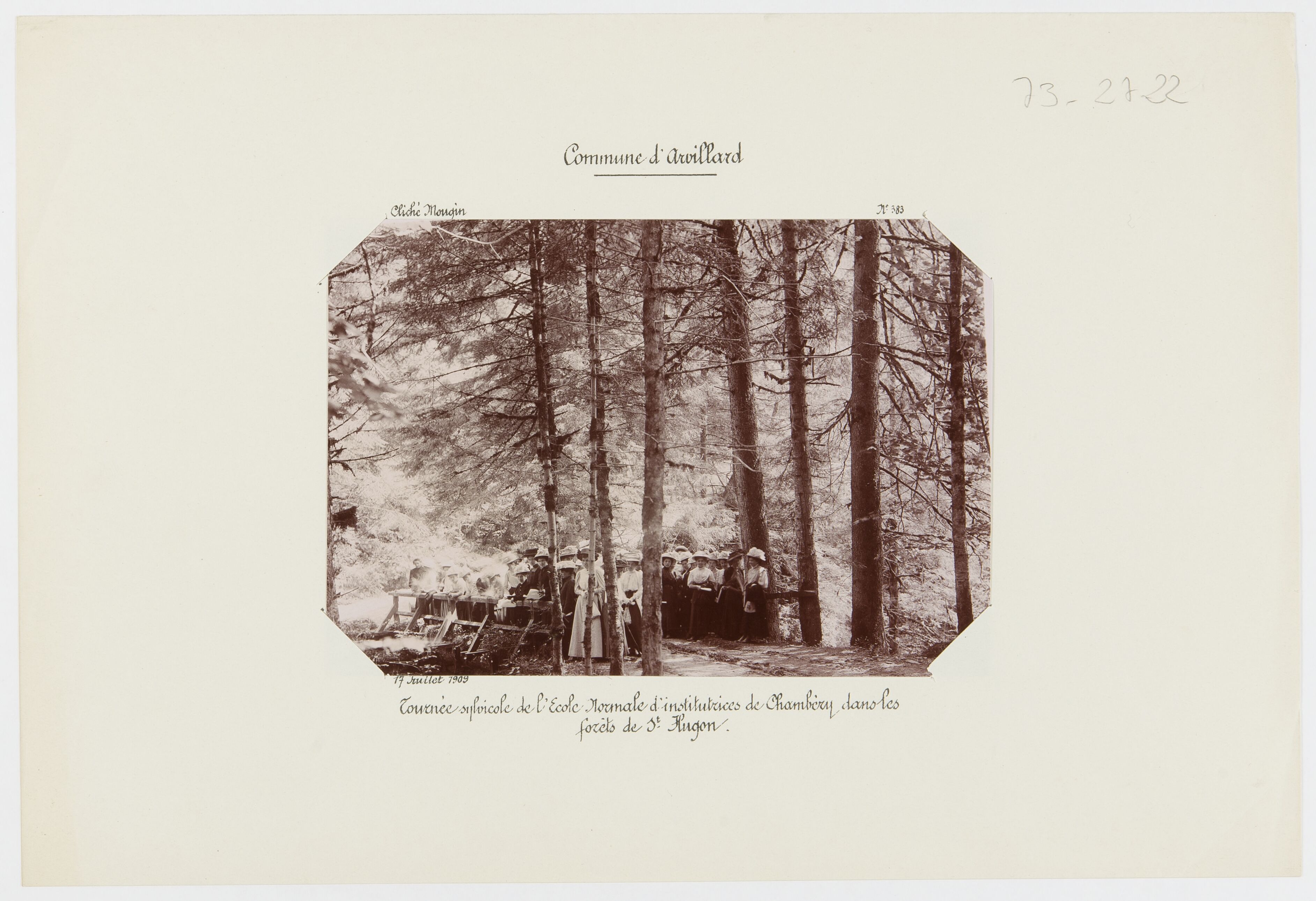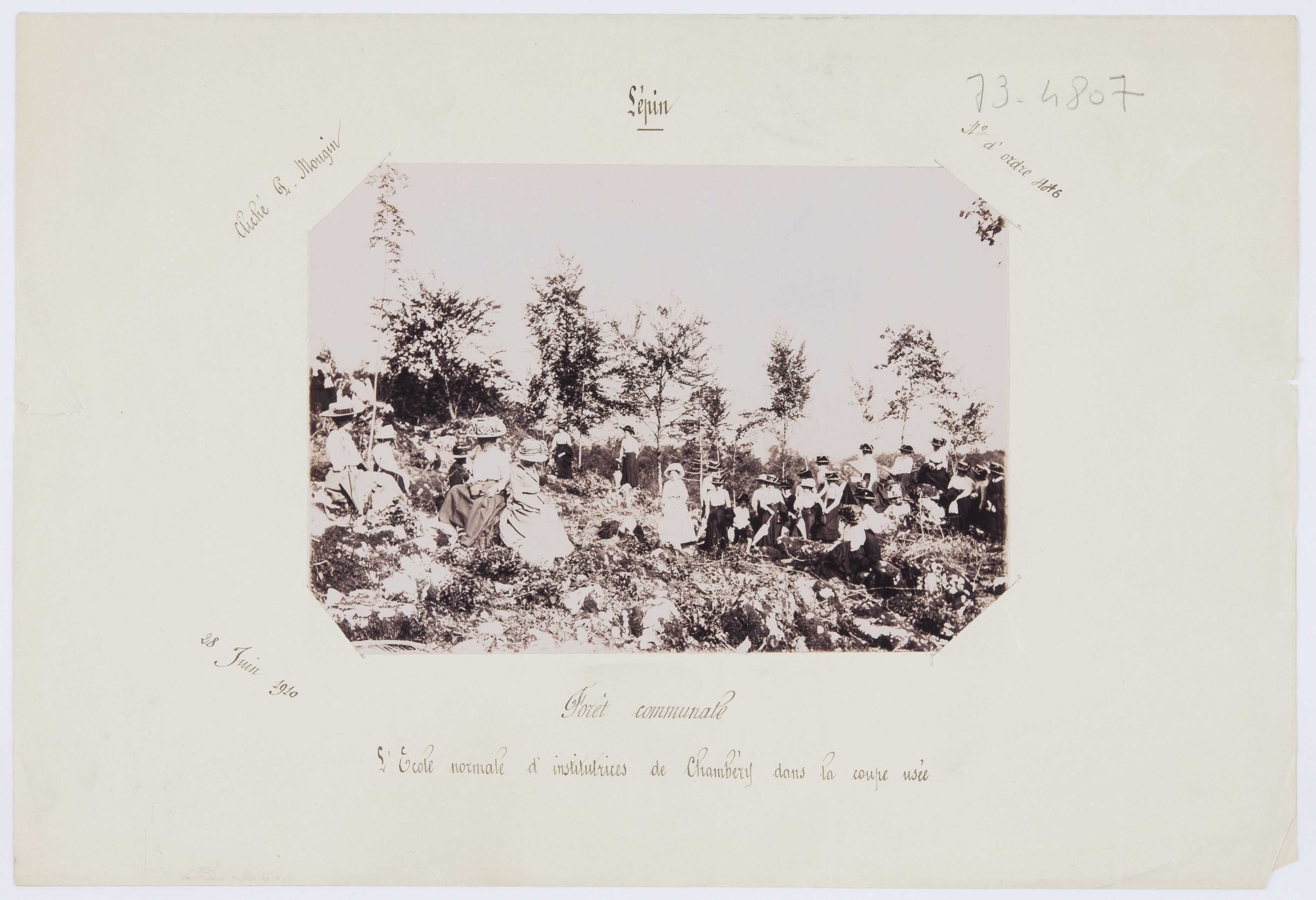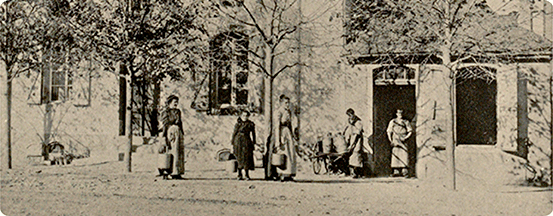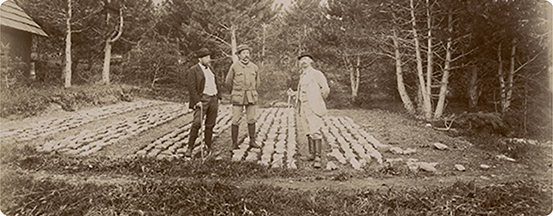Some peculiar propaganda agents for reforestation
In the 19th century, the idea of reforesting to prevent flooding in the mountains needs to be disseminated and defended against the inhabitants who use the pastures. A major propaganda effort is therefore put in place, using a profession that is becoming established everywhere: schoolteachers.

The engineers at the École Nationale des Eaux et Forêts, the French National School of Forestry, following in the footsteps of Alexandre Surell, are convinced that reforestation is THE solution for mitigating the floods that hit the Alps and the Pyrenees at the beginning of the 19th century, and which leave a deep impression on the general public.
The reforestation of land around torrents was advocated and enshrined in the law of 1860. But it is not until the law of 4 April 1882 that the mountain land restoration services (RTM) (re) launch reforestation operations in the Alps and Pyrenees.
But reforesting what was previously pastureland runs counter to local pastoral practices. To convince sceptics and opponents - sometimes violent - a communication strategy based on propaganda is put in place. It gains momentum in the years 1890-1900.
“The ringleaders”, writes Forestry Inspector Vincent in 1901, “are generally influential people who remain the irreconcilable enemies of reforestation. As owners of pastures, if not of large herds, which are finding it increasingly difficult to feed themselves on degraded pastures, they are responsible in more ways than one for this unpleasant state of affairs”. A. Dugelay, revue de géographie alpine, tome 31 n°1 1943 pp 87-118)
"Mr de Coincy examines what has so far been persuasive action and what direction should be given to it. This direction is propaganda and teaching. Propaganda through teaching: sylvopastoral courses in teacher training colleges, creation of herbariums in these same colleges, explanatory walks, distribution of short treatises to teachers; forestry geography courses in secondary and middle schools; inclusion of the study of the Forestry Code in the law degree syllabus. Propaganda still through public lectures, the press, and so on." (Revue des eaux et forêts 1906, p.490)
A local intermediary is identified as an important agent, essential to the education of the inhabitants of these villages: the schoolteacher.
With the introduction of free, compulsory primary schooling (1882), it is now possible to reach children in the areas to be reforested, and thus their parents. The first step is therefore to train student teachers, the “black hussars of the Republic”.

Forestry tour of the Chambéry teacher training college in the forests of St Hugon. Paul Mougin, 1909 (photo n°73-2722)
They are to receive lessons, attend lectures and make visits with foresters stationed in the departments concerned.
"A good number of teacher training colleges already have a forestry officer responsible for giving forestry instruction to student teachers. This kind of intervention by foresters always produces excellent results, provided that they know how to restrict themselves to generalities and very simple principles, and that they do not pretend to teach silviculture and forest management in just a few lessons. It seems to us that basic concepts such as those contained in Mr. (Pierre) Buffault's book should at least be the indispensable preamble to forestry instruction in teacher training colleges." Revue des eaux et forêts (water and forestry magazine. In French) 1906, p.210
“[The 1906 conferences] dealt with the close correlation between the history of the forest and that of people, the relationship between the forest and the climate, the water regime, the public and social economy, its treatment as a timber forest and as a coppice ; then, from a pastoral point of view, the consequences of deforestation and grazing abuses, ways of remedying them, methods of improving pastures in mountain areas, the restoration of communal or private rangelands; then again, the educational role of the schoolteacher and forestry and pastoral societies, the organisation of tree festivals, and so forth. ” Rapports et délibérations / conseil général de la haute Savoie (Reports and deliberations / Haute Savoie General Council. In French), 1907 p.26 – 27

Communal forest. The Chambéry teacher training college in the worn-out cutting. Paul Mougin, 1910 (photo 73-4807)
By the end of the 1920s, more than twenty teacher training colleges are offering forestry courses to future teachers. Although they are only one link in the reforestation propaganda policy, they have the moral and local authority that forestry officials often lack to convince the local population. In their own way, they contribute to the implementation of a policy that will have taken decades to establish.
Bibliography
A Dugelay (1943) Déboisements et reboisements dans les Alpes-Maritimes. (Deforestation and reforestation in the Alpes-Maritimes). A. Dugelay, revue de géographie alpine (review of alpine geography. In French) volume 31, n°1, pp 87-118.
Revue des eaux et forêts (water and forestry magazine. In French) 1906, p.210.
Revue des eaux et forêts (water and forestry magazine. In French) 1906, p.490.
Rapports et délibérations / conseil général de la Haute Savoie (Reports and deliberations / Haute Savoie General Council. In French), 1907 p.26 – 27.
Le Chêne, (The Oak), 1st and 2nd quarter issue (in French), 1928
Text written by Pascale Hénaut (INRAE-DipSO)
How to cite: Focus Agate: Pascale Hénaut (INRAE-DipSO), Some peculiar propaganda agents for reforestation, february 2025 https://agate.inrae.fr/agate/en/content/highlights
Illustrations
The banner and thumbnail were made from a photography "73-3562: The Chambéry teacher training college on the diversion dam (Morel torrent). Paul Mougin 1910"




